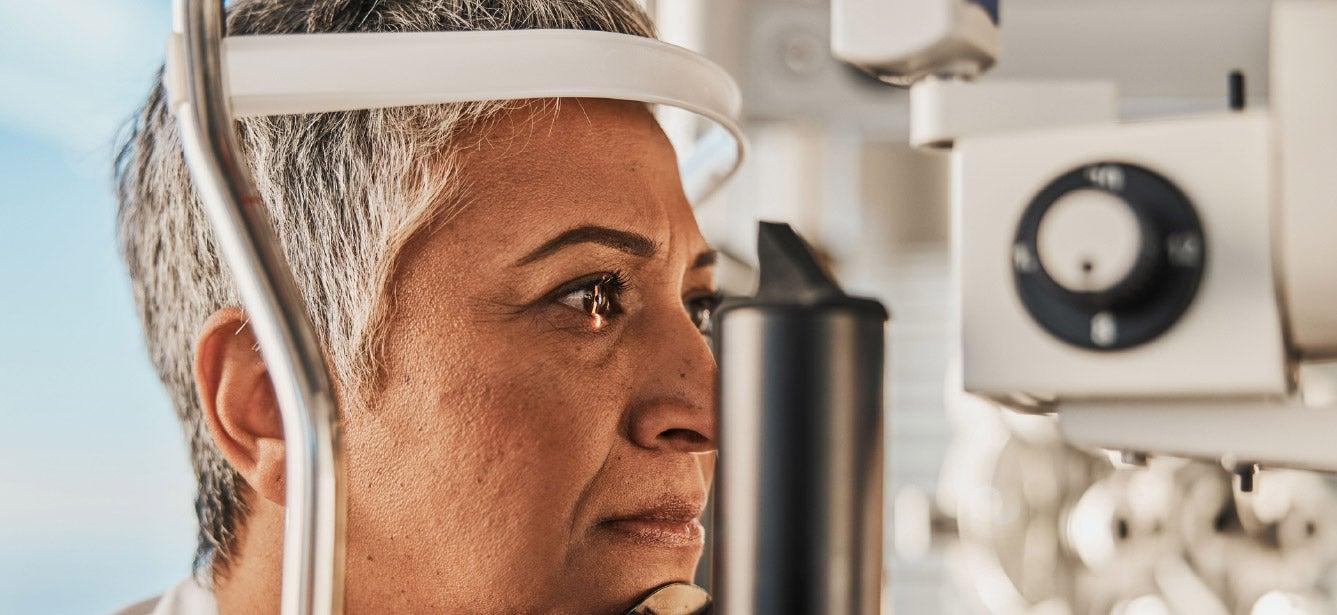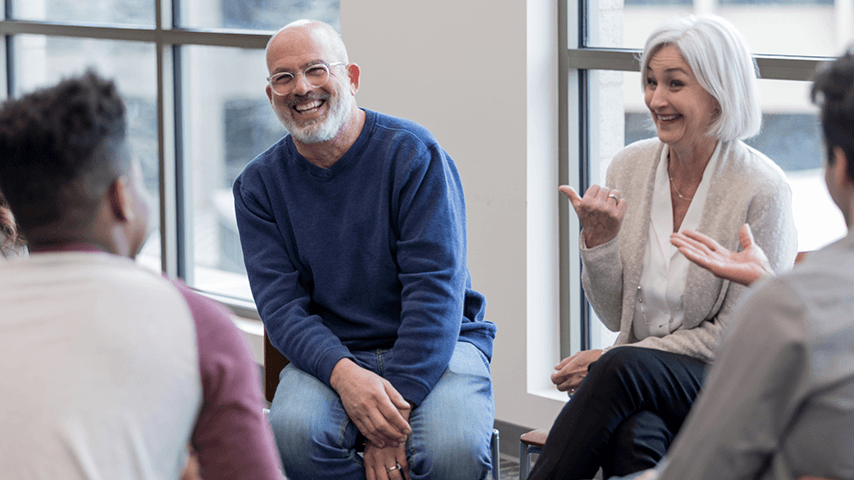
Related Topics
Although our vision changes as we age, much can be done to treat and correct visual difficulties. And when medical interventions cannot correct vision impairment, a range of alternative strategies can help people learn to overcome difficulties and live a full life with vision loss.
As we like to say at Time to Be Bold, "You can do more than just survive. You can thrive."
Where should I start with medical eye care?
Adults age 18 – 64 should have an eye exam every two years, and those 65 and older have yearly eye exams.1 A dilated eye exam will evaluate the health of the eyes and can even detect other health conditions.
Unfortunately, many health insurance programs, including Medicare, do not cover vision checkups unless there is a diagnosed eye condition. Some tests, like for glaucoma, may be covered for people at high risk. Corrective lenses can often help restore vision, but again, are not always covered by health insurance. The lack of insurance coverage means some people may forgo seeing the eye doctor until they already have a significant problem.
What are common eye conditions in older adults?
Several common eye conditions that cause reduced vision and most frequently affect those 55 and older include glaucoma, cataracts, macular degeneration, and diabetic retinopathy. Eye conditions often begin slowly and may not be noticeable for some time.
- Glaucoma is an eye condition that begins slowly with no pain or obvious symptoms. Fortunately, glaucoma is one of the most treatable eye conditions. Early detection and treatment can delay and/or prevent significant vision loss. Once vision loss has occurred with glaucoma, it cannot be reversed, so early detection and treatment are important. Those at higher risk for glaucoma include people with a family history of the condition and being African American.
- Cataracts are another treatable condition. They commonly develop with advancing age and are usually surgically removed. Most health insurance covers the majority of the cost of this outpatient procedure. Cataract surgery is the most common surgery performed in the United States and successfully restores vision for many.
- Macular degeneration is an age-related condition that causes blind spots near the center of the visual field, interfering with tasks like reading and seeing faces. Most people with macular degeneration maintain some functional vision. Treatments are effective for some patients. Regular eye examinations, along with telling the eye doctor when visual changes occur, will help the eye doctor recommend treatment.
- Diabetic retinopathy is caused by diabetes, a systemic condition that often affects the eyes. Regular eye exams are essential for identifying potential problems and obtaining early treatment. The best preventive measure is to control blood sugar levels, so regular appointments to monitor diabetes are also important.
No matter the cause of vision impairment, it is important to have regular eye exams. It may seem that regular exams are not changing anything about the progression of a condition. However, additional, sometimes treatable, conditions may develop, and medical treatments, whether for the primary or secondary condition, are important to maintain usable functional vision for as long as possible. Having regular check-ups will also help patients to receive new emerging treatments when they become available.
Impact of vision loss on older adults
Reduced vision can impact someone's health beyond their eyes. Those who experience vision impairment may limit their physical activities because they are concerned about their safety and/or because they can no longer drive to participate in activities. The lessening of activity impacts both physical health and social and emotional well-being. In a recent report, various health conditions were observed among those who had limited vision and those of the same age who did not. Those with limited vision were generally twice as likely to report additional health conditions.2
Despite the impact of vision impairment on a person, there are services that can help these individuals to maintain their independence in the home and community.
What vision rehabilitation services are available?
Vision rehabilitation services provide instruction in the use of alternative strategies and assistive technologies that help with daily living tasks. These rehabilitation services for vision impairment aim to help people maintain or regain independence. One specific focus of services relates to obtaining and maintaining employment, so if this is a concern, be sure this is mentioned when seeking services.
Services are provided by professionals who specialize in helping people learn about:
- Maximizing the use of vision
- Traveling safely and independently in the home and community
- Employing alternative skills for home and personal management
- Using computers, tablets, and smartphones.
These professionals are most commonly found at state services for the blind or non-profit agencies for the blind. (Note that vision impairment is a spectrum, and the word blind is inclusive of all levels of vision impairment.)
Most individuals served by these programs have usable vision and are often able to read with magnification aids, may still see colors, and may be able to walk without difficulty or even drive. Seeking services as soon as the loss of vision is impacting daily life will help individuals know that they will not be alone in facing vision impairment. They will learn about the strategies and devices that can help, and they will meet others who are also facing vision impairment. Obtaining rehabilitation services will help individuals to learn to use the strategies, assistive devices, and services that can keep them active in their homes and community.
How can the organization Time to Be Bold help me?
Time To Be Bold is a national public awareness campaign affiliated with the Older Individuals who are Blind Technical Assistance Center (OIB-TAC), which is a part of the National Research & Training Center on Blindness and Low Vision (NRTC) at Mississippi State University. To locate services in your state or find additional resources, visit www.timetobebold.org.
Time To Be Bold empowers you to connect with services in a way that is comfortable to you! A person with vision loss or their family can:
- Call and speak to a person immediately through APH connect hotline
- Learn practical coping strategies for everyday tasks, join remote discussion groups, and speak to learning experts by engaging with Hadley’s free online material
- Explore helpful information on Time To Be Bold and continue learning on VisionAware.org
This project was supported, in part by grant number 90CSSG0048 and 90FPSG0051 from the U.S. Administration for Community Living, Department of Health and Human Services, Washington, D.C. 20201. Grantees undertaking projects under government sponsorship are encouraged to express freely their findings and conclusions. Points of view or opinions do not, therefore, necessarily represent official Administration for Community Living policy.
Sources
1. American Optometric Association. Comprehensive eye exams. Found on the internet at https://www.aoa.org/healthy-eyes/caring-for-your-eyes/eye-exams
2. VisionServe Alliance. Big Data Project Reports. Found on the internet at https://visionservealliance.org/big-data-insights/



